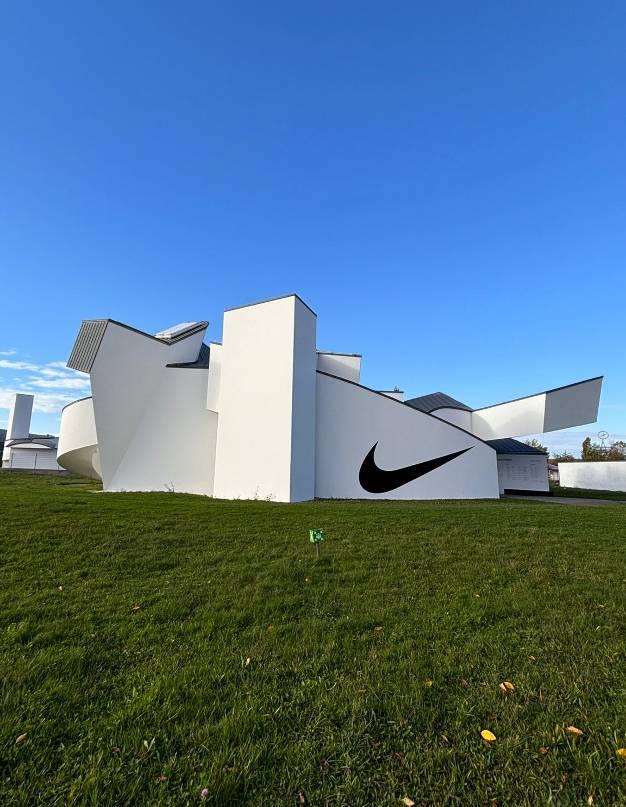
The Vitra Design Museum, located on the Vitra campus in Weil am Rhein, Germany, is more than just a design museum; it’s an architectural masterpiece created by acclaimed architect Frank Gehry. Known for his deconstructivist style and bold forms, Gehry brought a fresh perspective on architecture and design to the museum and campus, cementing the site as a global icon. This post will explore Gehry’s vision for the Vitra Design Museum and how his approach influenced his other world-renowned works.

The Vitra Design Museum: A Landmark in Architecture
Opened in 1989, the Vitra Design Museum was one of Frank Gehry’s first projects in Europe and is a striking example of his signature style, characterized by deconstruction, sculptural forms, and a bold palette of materials. The museum’s structure stands out for its asymmetrical and dynamic forms, which break away from the traditional and surprise visitors by combining white surfaces with touches of zinc. These organic forms make the building not just an exhibition space, but an artistic piece in its own right, challenging the conventional idea of a museum.
Gehry was chosen for the project by the Vitra family, who wanted to create a space to showcase their vast collection of designer furniture while establishing a striking architectural presence. Gehry captured this essence, creating a building that uniquely unites form and function. His use of unusual, curvilinear forms inspires an immersive experience for visitors, who feel the connection between the design of the pieces on display and the museum’s structure.

The Influence of Gehry’s Style on the World
Frank Gehry’s career is marked by innovation, and the Vitra Design Museum was just the beginning of a series of projects that would place his name at the top of the world’s architectural scene. One of Gehry’s most iconic works is the Guggenheim Museum in Bilbao, Spain, completed in 1997. As with the Vitra, Gehry used organic forms and modern materials, especially titanium, to create a building that became a symbol of urban rebirth, profoundly influencing tourism and the local economy.
Another work that bears Gehry’s architectural DNA is the Walt Disney Concert Hall in Los Angeles, completed in 2003. In this project, Gehry used stainless steel to create a façade with dramatic, fluid curves, resulting in a structure that is both functional and aesthetically striking. The building is a landmark in the city of Los Angeles and stands out for its impeccable acoustics, demonstrating how Gehry does not sacrifice function for form, but masterfully harmonizes both.
Gehry’s Originality and Legacy
Frank Gehry’s work at the Vitra Design Museum paved the way for his revolutionary vision of modern architecture. Each of his works reflects a relentless pursuit of innovation and experimentation, making each project a unique work of art. Throughout his career, Gehry has refused to follow rigid conventions, preferring to create fluid forms and architectural sculptures that are as compelling for their boldness as they are for their technical precision.
The architecture of the Vitra Design Museum, with its interlocking geometric forms and bold aesthetics, is a testament to the impact that architecture can have on the human experience. The museum has transformed the Vitra campus into a destination for design and architecture enthusiasts and has influenced a generation of architects to explore and redefine the boundaries of form and function.
Frank Gehry brought a new vision to the Vitra Design Museum, which continues to inspire visitors from around the world. His works, such as the Guggenheim Bilbao and the Walt Disney Concert Hall, cemented his reputation as an innovator and artist, redefining architecture as a bold and visionary medium. The Vitra Design Museum is a celebration of design in all its aspects, from the furniture on display to the walls and roofs that house these creations – and is undoubtedly a key part of Frank Gehry’s legacy in the history of architecture.
For those who visit the museum, the experience goes beyond the exhibitions; it is an encounter with the genius of an architect who transformed forms and structures into pure visual and emotional impact.






